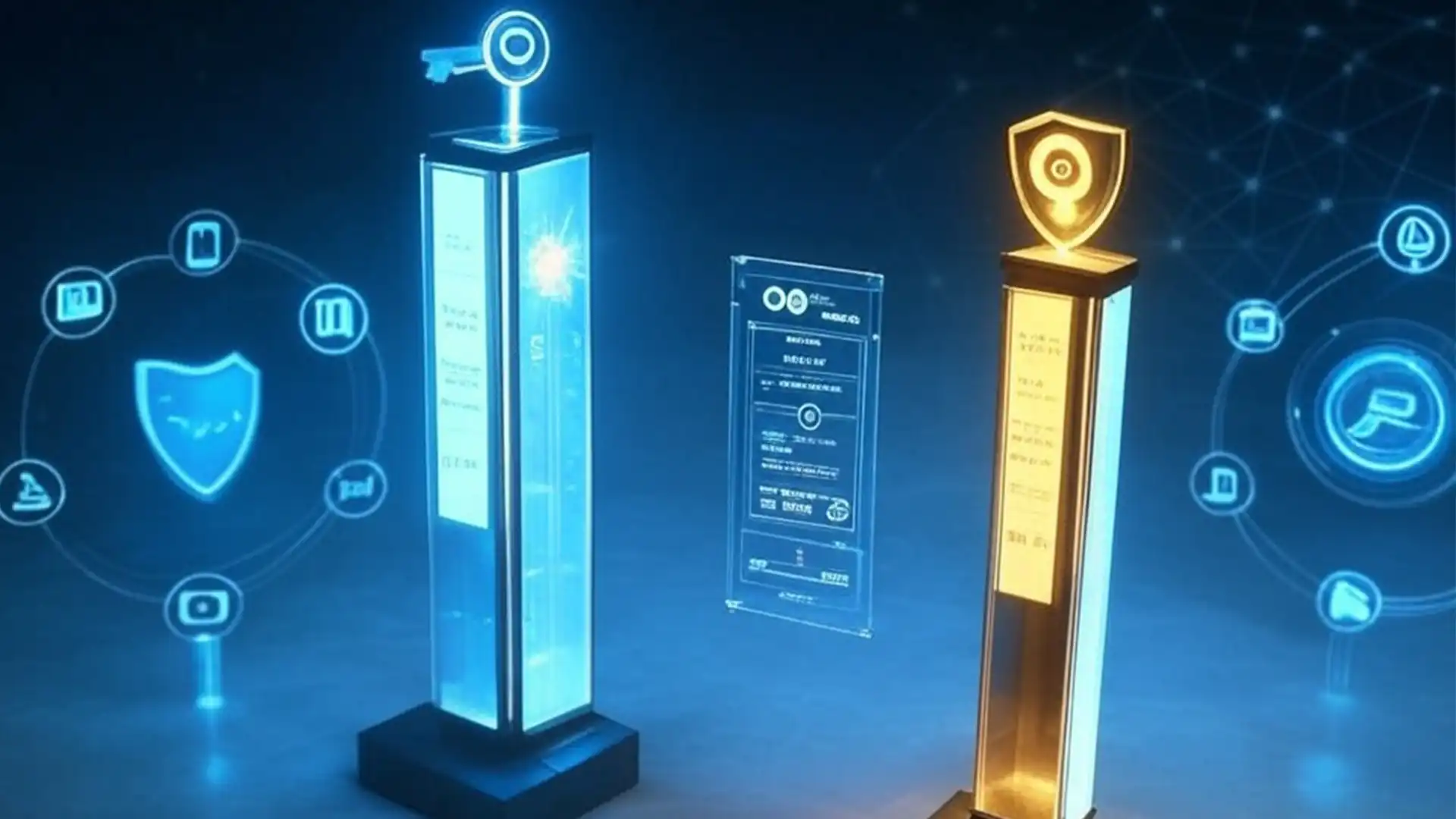Utility Tokens vs Security Tokens: Essential Differences

In the evolving cryptocurrency landscape, token classification has become increasingly important from both technological and regulatory perspectives. Among the most significant distinctions is the difference between utility tokens and security tokens. This comprehensive guide explores these two token categories, their characteristics, use cases, and regulatory implications.
Understanding Token Classifications
Before diving into specific token types, it’s important to understand that cryptocurrency tokens broadly fall into several categories based on their function, purpose, and legal status:
- Utility Tokens: Provide access to products or services
- Security Tokens: Represent investment in an enterprise
- Governance Tokens: Grant voting rights in decentralized organizations
- Non-Fungible Tokens (NFTs): Represent unique digital or physical assets
- Stablecoins: Maintain stable value through pegging to external assets
Utility Tokens: Access to Products and Services
Utility tokens are digital assets designed to provide users with access to a specific product, service, or functionality within a blockchain ecosystem. They are intended to serve a particular use case rather than function as investments.
Key Characteristics of Utility Tokens
- Functional Purpose: Designed to perform specific functions within an ecosystem
- User-Focused: Created to provide value to users of a platform
- Network Access: Often required to access services on a particular blockchain
- Consumptive Intent: Meant to be used rather than held as an investment
- No Ownership Rights: Generally don’t confer ownership in the issuing project
Common Use Cases for Utility Tokens
- Platform Access: Tokens required to use a decentralized application
- Discount Mechanisms: Reduced fees for token holders on exchanges or platforms
- Voting Rights: Governance participation in protocol decisions
- Reward Systems: Incentives for platform participation and contribution
- Payment Methods: Medium of exchange within specific ecosystems
Notable Examples of Utility Tokens
- Basic Attention Token (BAT): Used within the Brave browser ecosystem to reward content creators and users for attention
- Filecoin (FIL): Provides access to decentralized storage services
- VeChain (VET): Facilitates supply chain management and verification
- Enjin Coin (ENJ): Powers a gaming ecosystem for creating and managing digital assets
Security Tokens: Investment Instruments on Blockchain
Security tokens represent financial securities – traditional assets like stocks, bonds, or fund shares that have been tokenized on a blockchain. These tokens derive their value from external, tradable assets and typically represent financial investments.
Key Characteristics of Security Tokens
- Investment Purpose: Primarily designed as investment vehicles
- Ownership Rights: Often represent equity, debt, or rights to profit-sharing
- Expectation of Profit: Investors typically anticipate returns from the efforts of others
- Regulatory Compliance: Subject to securities regulations in most jurisdictions
- Legal Protections: Offer investor protections similar to traditional securities
Common Use Cases for Security Tokens
- Equity Tokens: Represent ownership shares in a company
- Debt Tokens: Represent bonds or loans with repayment terms
- Asset-Backed Tokens: Represent ownership in real-world assets like real estate
- Profit-Sharing Tokens: Entitle holders to a portion of company revenues
- Investment Fund Tokens: Represent shares in tokenized investment funds
Notable Examples of Security Tokens
- Polymesh (POLYX): Purpose-built blockchain for creating and managing security tokens
- tZERO: Platform for trading security tokens with several listed assets
- Exodus Shares: Tokenized company shares of Exodus wallet on the Algorand blockchain
- RealT: Tokenized real estate properties offering fractional ownership
The Howey Test: Legal Framework for Classification
In the United States, the classification of tokens often relies on the Howey Test, established by the Supreme Court in 1946. Under this test, an investment contract (and thus a security) exists when there is:
- An investment of money
- In a common enterprise
- With an expectation of profits
- Derived primarily from the efforts of others
Key Differences: Utility vs Security Tokens
Understanding the fundamental differences between these token types is essential for creators, investors, and users:
Purpose and Function
- Utility Tokens: Created to provide access to a product or service
- Security Tokens: Designed to function as investment vehicles
Value Derivation
- Utility Tokens: Value comes from usefulness within an ecosystem
- Security Tokens: Value derived from external assets or company performance
Regulatory Treatment
- Utility Tokens: May avoid securities regulations if properly structured
- Security Tokens: Explicitly designed to comply with securities laws
Investor Expectations
- Utility Tokens: Users anticipate functional utility
- Security Tokens: Investors expect financial returns
Trading Restrictions
- Utility Tokens: Generally tradable on most cryptocurrency exchanges
- Security Tokens: Often restricted to licensed securities exchanges or platforms
Regulatory Landscape for Token Classification
Regulatory approaches to token classification vary significantly across jurisdictions:
United States Approach
- Securities and Exchange Commission (SEC): Applies the Howey Test
- Emphasis on substance over form: How tokens actually function matters more than how they’re marketed
- No safe harbor: Currently limited pathways for tokens to transition from securities to utilities
European Union Approach
- Markets in Crypto-Assets (MiCA): Comprehensive framework for different token types
- Three categories: Asset-referenced tokens, e-money tokens, and utility tokens
- Harmonized approach: Single set of rules across EU member states
Singapore Approach
- Monetary Authority of Singapore (MAS): Focuses on token characteristics and rights
- Case-by-case evaluation: Detailed assessment of each token’s specific attributes
- Clear guidance: Published frameworks for token classifications
Switzerland Approach
- Financial Market Supervisory Authority (FINMA): Three-category classification system
- Payment tokens, utility tokens, asset tokens: Clear distinctions between types
- Hybrid tokens: Recognition that tokens may fall into multiple categories
Creating Compliant Tokens: Key Considerations
For projects creating tokens, classification has significant implications:
For Utility Token Creators
- Ensure genuine utility: Token must have clear use cases from launch
- Avoid investment promises: Marketing should focus on functionality, not price appreciation
- Build before token sale: Have a working product before token distribution
- Decentralization: Reduce dependency on the founding team for token value
For Security Token Creators
- Embrace compliance: Design with securities regulations in mind
- KYC/AML procedures: Implement robust verification processes
- Transfer restrictions: Limit trading to eligible investors only
- Disclosure requirements: Provide thorough and transparent information
- Licensed platforms: List only on properly regulated exchanges
Hybrid Tokens and Edge Cases
Many tokens don’t fit neatly into either category, creating complex classification challenges:
Hybrid Tokens
Some tokens have both utility and security aspects:
- Governance tokens that also confer economic rights
- Protocol tokens that provide utility but are marketed for investment
- Dividend-paying utility tokens with both functional use and financial returns
Transitional Tokens
Some projects aim for tokens to transition from security to utility status:
- Initial distribution as securities to fund development
- Gradual transition to utility as the platform matures
- Regulatory challenges in managing this transition
The Future of Token Classification
The token classification landscape continues to evolve:
- Regulatory clarity: More jurisdictions developing clear frameworks
- Self-regulation: Industry standards for token design and disclosure
- Legal innovations: New structures that balance compliance and functionality
- Global coordination: Efforts to harmonize approaches across borders
Conclusion
The distinction between utility tokens and security tokens represents one of the most important frameworks for understanding the cryptocurrency token landscape. While utility tokens provide functional access to products and services, security tokens represent investment opportunities with expected financial returns. For investors, users, and project developers, understanding these classifications is crucial for navigating both the technological ecosystem and the regulatory environment. As the blockchain industry matures, clearer standards and regulations will likely emerge, but the fundamental distinction between tokens designed for use and those designed for investment will remain central to how digital assets are created, regulated, and traded. Whether participating in token sales, developing blockchain projects, or using decentralized applications, recognizing the nature and classification of tokens provides essential context for making informed decisions in this rapidly evolving space.


